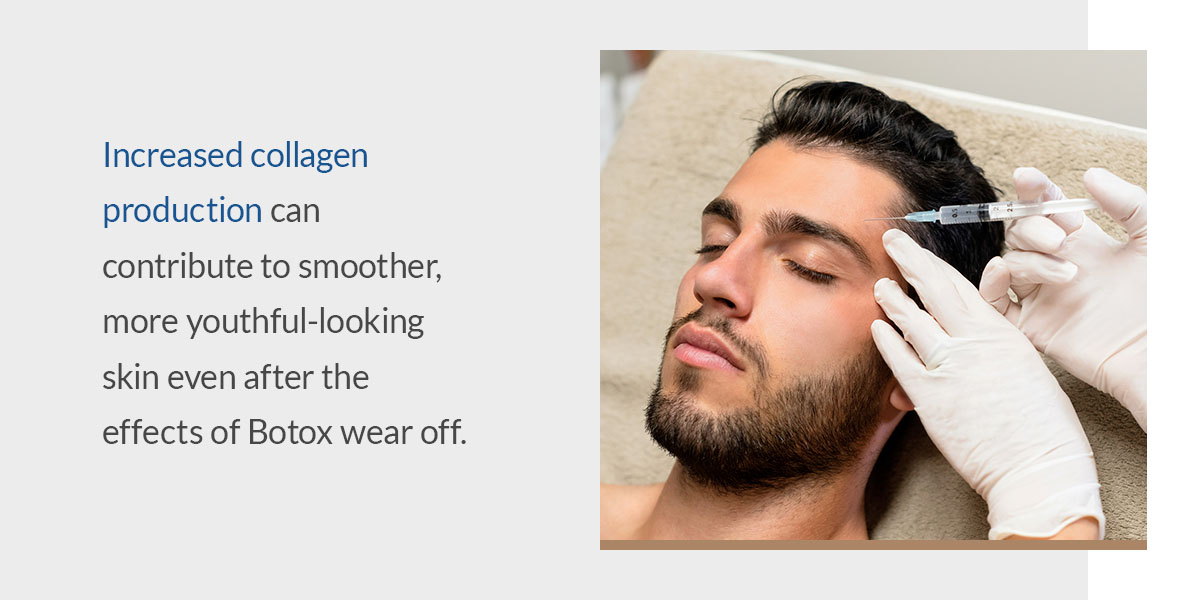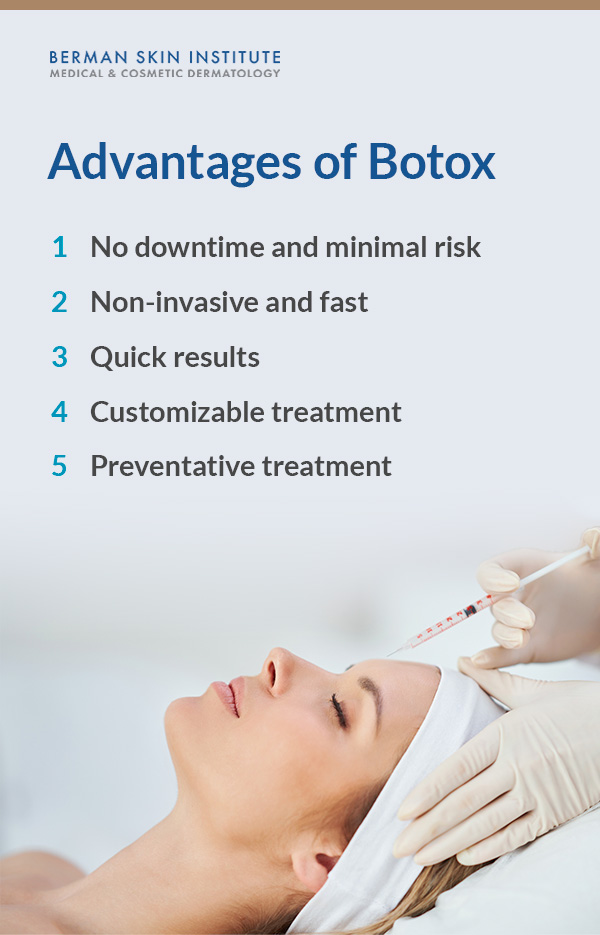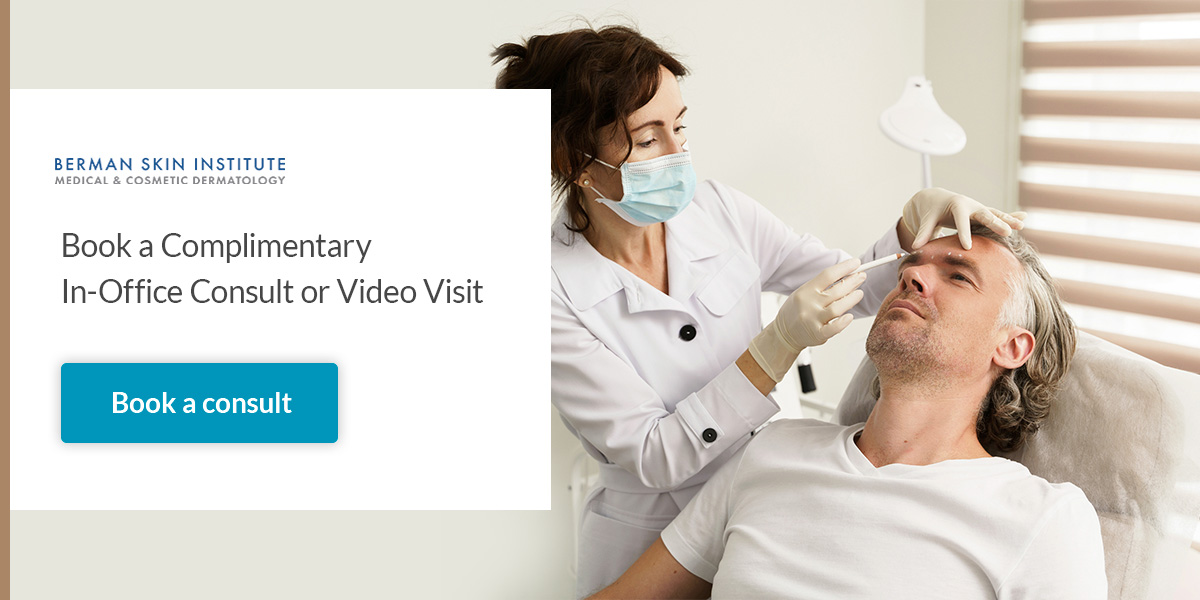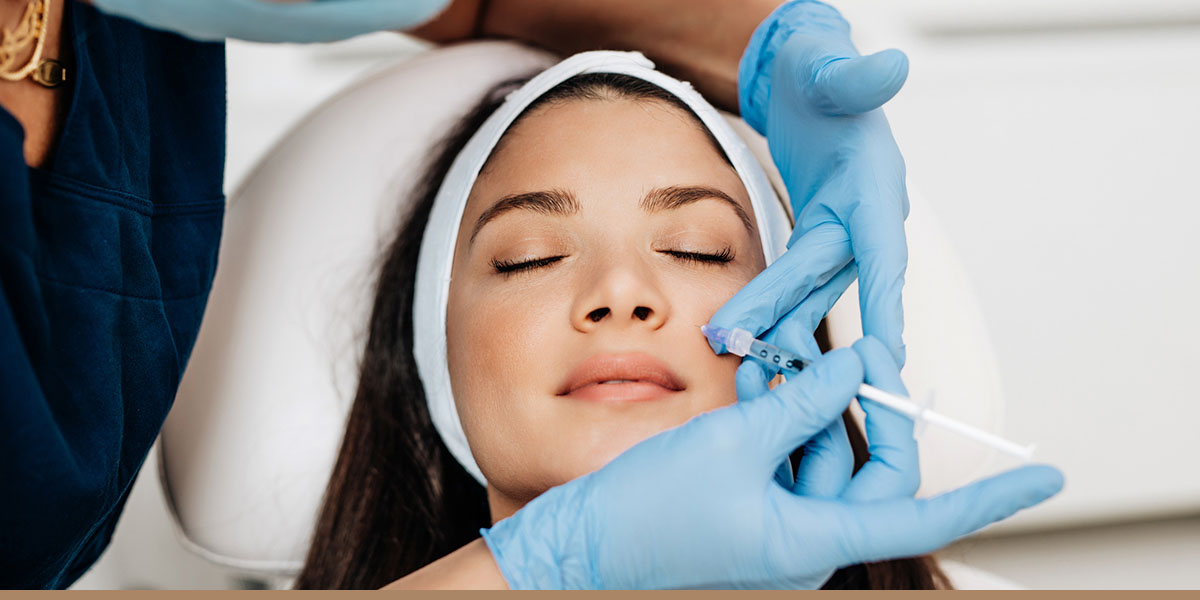
Botox is the most popular cosmetic treatment in the world, with over 7.3 million Botox injections performed in 2021 alone. Botox treatments can reduce the appearance of wrinkles and fine lines, making it an excellent choice for people hoping to achieve a younger-looking appearance.
Despite its popularity, there are still many questions people have about the procedure. If you’re interested in Botox but need clarification on whether it’s right for you, continue reading to learn all you need to know before getting your first injection.
What Is Botox?
Botox is a cosmetic treatment most notably used to reduce the appearance of wrinkles and fine lines. Botox is short for “botulinum toxin,” a neurotoxic protein produced by the bacterium Clostridium botulinum, which is found naturally in plants, water and soil.
In cosmetic procedures, Botox is commonly injected into facial muscles to temporarily smooth wrinkles and fine lines, particularly those caused by repetitive facial expressions. Common treatment areas include frown lines between the eyebrows, crow’s feet around the eyes and forehead wrinkles.
Despite its association with cosmetic applications, Botox has diverse therapeutic uses and has revolutionized the field of aesthetic medicine. It can be used to treat medical conditions like chronic migraines, muscle stiffness, excessive sweating and certain eye disorders. Botox injections can also help manage physical health conditions like neck spasms and temporomandibular joint disorder (TMJ).
How Does Botox Work?
Botox works by blocking nerve signals to specific muscles. This causes them to relax, reducing the appearance of lines and wrinkles on the skin. Here’s what you can expect to happen during the procedure:
- Binding: Botox injections are administered directly into the targeted muscle area, attaching to the nerve endings that control your muscle movement.
- Neurotransmitter inhibition: Once attached, Botox prevents the release of a neurotransmitter responsible for transmitting signals between nerve cells. By inhibiting its release, Botox interrupts the communication between the nerves and muscles.
- Muscle relaxation: Without stimulation from the neurotransmitter, the muscle can’t contract as forcefully as before, causing the muscles to relax temporarily. This results in a reduction of wrinkles and lines on the surface of your skin.
- Collagen stimulation: Over time, Botox injections can also stimulate collagen production in the treated area. Collagen is a protein that helps provide structure and elasticity to the skin. Increased collagen production can contribute to smoother, more youthful-looking skin even after the effects of Botox wear off.
It’s crucial to note that Botox only affects the targeted muscles where it’s injected. The surrounding muscles on your face will remain unaffected, allowing for normal facial expressions and movements.
What Is Botox Used For?
Botox has various applications in both cosmetic and medical fields. As stated, Botox is primarily used to reduce the appearance of wrinkles and fine lines on the face, as well as frown lines between the eyebrows, crow’s feet around the eyes and forehead wrinkles.
At the same time, Botox can be used for the following medical conditions:
- Chronic migraines: Botox injections are approved to prevent chronic migraines in adults.
- Muscle spasms: Botox can treat muscle spasms like cervical dystonia and blepharospasm. It helps relax the affected muscles to reduce involuntary movements.
- Excessive sweating: Botox injections can effectively treat hyperhidrosis, a condition characterized by excessive sweating. It works by blocking the nerve signals that stimulate sweat glands, reducing sweat production in the treated area.
- Overactive bladder: Botox can also be used to treat overactive bladder, a condition characterized by the frequent and sudden urge to urinate. The procedure can relax the bladder muscles to increase capacity and reduce urinary urgency.
- Strabismus: Botox treats strabismus, a condition where the eyes are misaligned and do not focus together. It can relax the eyes muscles to allow proper alignment and improved vision.
- TMJ disorders: Botox injection can relieve TMJ, a condition that causes jaw pain and dysfunction. The procedure can alleviate pain and reduce jaw clenching or teeth grinding by relaxing the jaw muscles.
- Facial tics and spasms: Botox can also be used to treat facial tics and spasms or facial nerve disorders. It can calm the muscles responsible for involuntary movements.
Benefits of Botox
There are so many benefits of Botox for both cosmetic and medical applications. The treatment can also be an excellent alternative to more invasive procedures. Here’s a breakdown of the benefits you can experience from Botox injections:
Procedure Advantages
When you opt for Botox treatment, you can experience many unique advantages compared to other cosmetic procedures, such as:
- No downtime and minimal risk: Botox injections require no downtime, meaning you can resume your regular activities immediately after treatment. Additionally, there’s minimal risk involved. When appropriately administered by qualified medical professionals, complications are low, and there are no long-term or life-threatening adverse effects related to this cosmetic treatment.
- Non-invasive and fast: Botox injections are a non-invasive alternative to surgical procedures like facelifts. They involve minimal discomfort and require no anesthesia. The process will only take a few minutes, especially when working with a professional.
- Quick results: Botox offers relatively fast results. While it may take a few days for the effects to manifest fully, you’ll likely notice a significant improvement in your wrinkles within a week or two after treatment.
- Customizable treatment: Botox injections can be tailored to meet your specific needs. During a consultation with your provider, you can ask that injection sites are adjusted to target specific areas of concern. This allows for more personalized and natural-looking results.
- Preventative treatment: Botox can be used proactively to prevent wrinkles from forming on your face. By relaxing the muscles responsible for repetitive movements, Botox can help prevent the deepening of lines and wrinkles over time.
Cosmetic Improvements
One of the most significant benefits of Botox is that it can enhance your natural beauty. You can easily customize the injections to get a subtle, soft look that provides an anti-aging effect.
The procedure can provide the following cosmetic benefits:
- Reduce forehead wrinkles and frown lines.
- Reduce crow’s feet lines.
- Reduce lip lines and Platysmal neckbands.
- Reduce turned-down corners of the mouth.
By temporarily relaxing the muscles, Botox provides smoother and more youthful-looking skin.
Medical Benefits
In addition to cosmetic benefits, you can appreciate many medical uses of Botox injections when applied to specific areas of the body. As stated above, Botox can help reduce excess sweating, manage muscle spasms and stiffness and more. It’s crucial to note that Botox is considered safe and effective, and the Food and Drug Administration (FDA) has approved Botox to treat the above conditions.
What to Consider Before Getting Botox
Before getting Botox, consider the following factors to get the most from the experience:
- Qualified provider: Botox is a precise procedure that should only be performed by trained medical professionals. Make sure you choose a qualified and experienced professional specializing in administering Botox injections. Look for certifications, credentials and positive reviews to ensure you receive treatment from a reputable practitioner.
- Consultation: You’ll want to schedule a consultation with your health care provider to discuss your goals, concerns and medical history. They can determine if you’re suitable for Botox treatment, examine areas of concern and provide personalized recommendations. You’ll want to be open and honest about your expectations and underlying health conditions.
- Risks and side effects: Understanding the potential risks and side effects associated with Botox treatment is essential. While Botox is generally safe, there’s a possibility of temporary bruising, swelling, redness or drooping of the treated area. There’s also a potential for Botox diffusion, where it spreads beyond the injection site. Discuss the risks with your doctor and ensure you clearly understand the possible outcomes.
- Medical history: Provide your health care provider with your medical history, including previous cosmetic procedures, known allergies, current medications or existing health conditions.
- Goals and expectations: Have realistic expectations about Botox results. Understand that the treatment is a temporary solution that requires maintenance treatments to sustain the desired effects. Discuss what you can realistically expect based on your specific concerns.
- Treatment plan: Working with your health care provider on a personalized treatment plan is also essential. They can determine the proper dosage, injection sites and intervals between treatments so you get the most out of Botox injections.
Botox Treatment FAQ
Here are answers to common questions often asked about cosmetic Botox injections:
1. Is Botox Safe?
When administered by a qualified health care professional, Botox is generally considered safe. However, like any medical procedure, it carries potential risks and side effects such as temporary bruising or redness. Rarely, serious side effects can occur. Remember to consult with a reputable provider to discuss your medical history and follow their instructions for a safe Botox experience.
2. How Is Botox Administered?
Botox involves a series of small injections directly into the targeted muscles or skin. The procedure typically doesn’t require anesthesia.
Your provider will determine the appropriate dosage of Botox and injection sites based on your specific needs and goals. They’ll also have a detailed knowledge of the face, including its thickness and the type of muscles at different sites in the face. This ensures they know what muscles to inject the Botox into and the depth in which the needle must be inserted.
3. How Long Does It Take for Botox to Work?
The effects of Botox can typically appear as early as three days, with maximum results often seen within one to two weeks after treatment. The exact time can depend on factors like metabolism and muscle response. Patience is critical, and it’s crucial to follow up with your health care provider if you have any concerns.
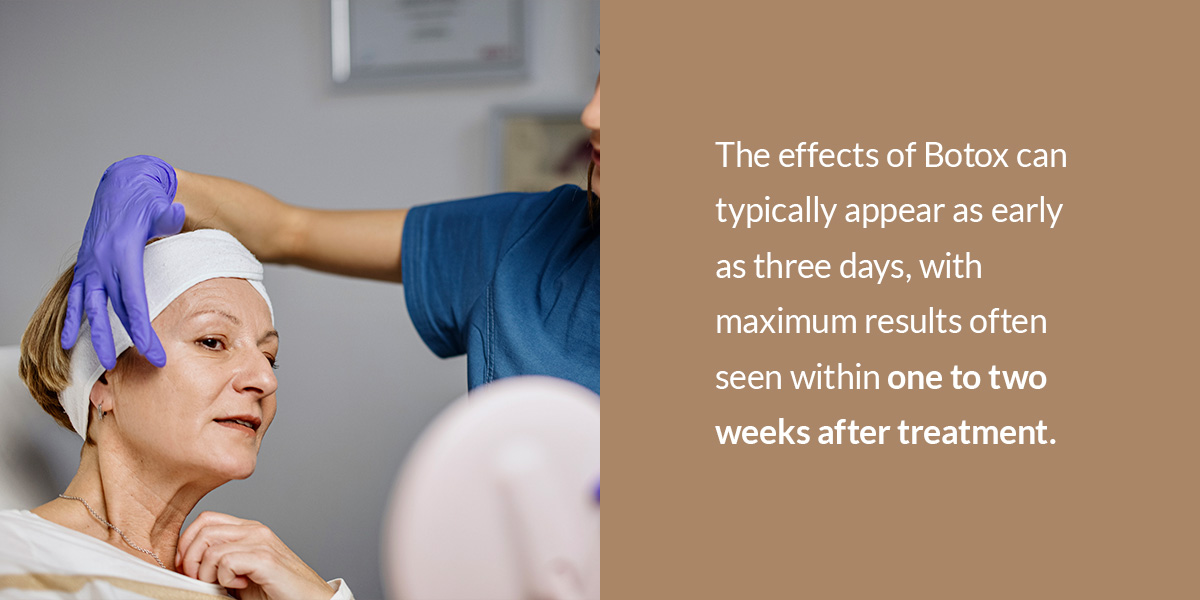
4. How Long Does Botox Last?
The effects of Botox are temporary and usually last three to six months, depending on the individual. You can then go for follow-up treatments as the effects wear off.
5. Does Botox Hurt?
The level of discomfort you can experience during Botox injection varies depending on your pain tolerance. Most people report minimal discomfort, often describing it as a slight pinch or stinging sensation. If you have any concerns about pain, you can discuss them with your doctor, who might provide ice packs, numbing cream or other measures to minimize discomfort.
6. Can You Get Botox While Pregnant?
It’s generally recommended to avoid Botox injections while pregnant or breastfeeding. While there’s no evidence that Botox can transfer from mother to child, it’s possible that Botox’s neurotoxins can be harmful to those allergic to them. These neurotoxins can also be dangerous in large amounts.
Overall, the effects haven’t been extensively studied, and there’s limited information on whether Botox is safe during these periods. To prioritize the well-being of the mother and baby, it’s advisable to postpone Botox treatments until after pregnancy and breastfeeding.
7. How Much Are Botox Injections?
Botox treatments are a relatively inexpensive cosmetic procedure, especially compared to surgical procedures. Botox is measured in units, so you’ll pay a certain amount depending on how many units are needed. Depending on your budget, you can do more or less to fit your needs. Botox is typically not covered by insurance for cosmetic purposes.
To learn more about the cost of injections, it’s best to consult with your medical provider during your consultation, who can provide an accurate estimate based on your individual treatment plan.
8. How Often Should You Get Botox?
The frequency of Botox treatments varies from person to person. Most people get Botox every three to six months to maintain their desired results. However, this can differ based on factors like your metabolism, muscle activity and treatment goals. Your health care provider will guide you on the best timing for follow-up treatments to get the desired outcomes.
9. How Long Does a Botox Treatment Session Typically Take?
Botox treatment often takes around 10 to 15 minutes. The actual injection process is relatively quick, but additional time might be needed for consultation and preparation.
10. Can You Still Make Facial Expressions After Botox?
Botox can be carefully administered to target specific muscles while preserving your natural ability to make facial expressions. The goal is to soften wrinkles without completely limiting facial movements. We aim for a balanced look, allowing for subtle and natural expressions.
Book a Complimentary In-Office Consult or Video Visit
Botox is a versatile substance used for both cosmetic and therapeutic purposes. Its ability to temporarily relax muscles has made it a popular choice for reducing the appearance of wrinkles and treating various medical conditions. If you’re considering Botox, consulting with qualified professionals is crucial to ensure a safe and effective treatment.
At Berman Skin Institute, we aim to combine cutting-edge medical technology and research with a commitment to your welfare and healing. That way, you receive the best dermatologic care possible. Our Botox® Cosmetic injections are safe and effective and can help bring out your natural beauty. Book a complimentary in-office consult or video visit to learn more about our Botox® Cosmetic treatments today.



